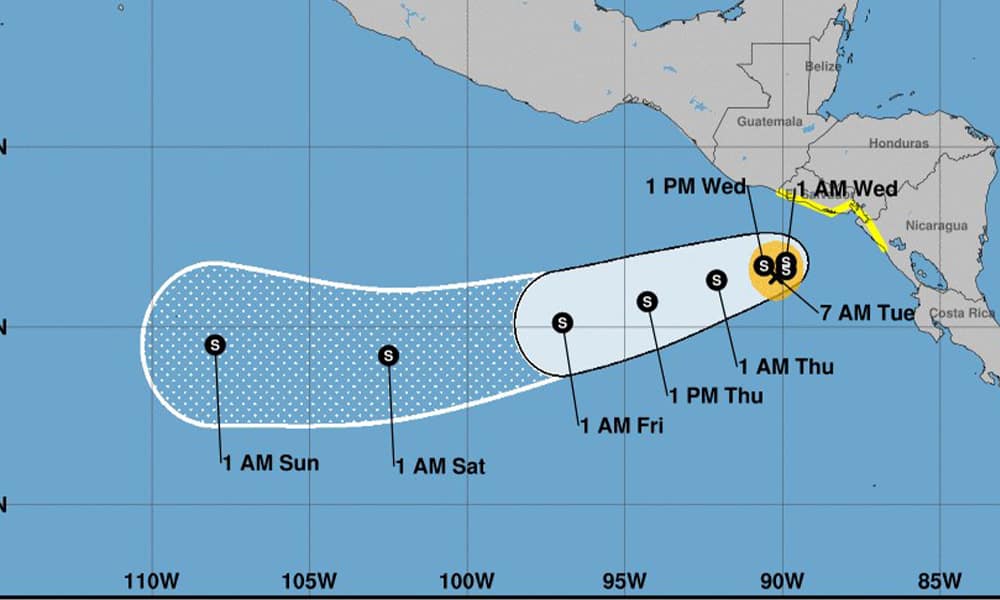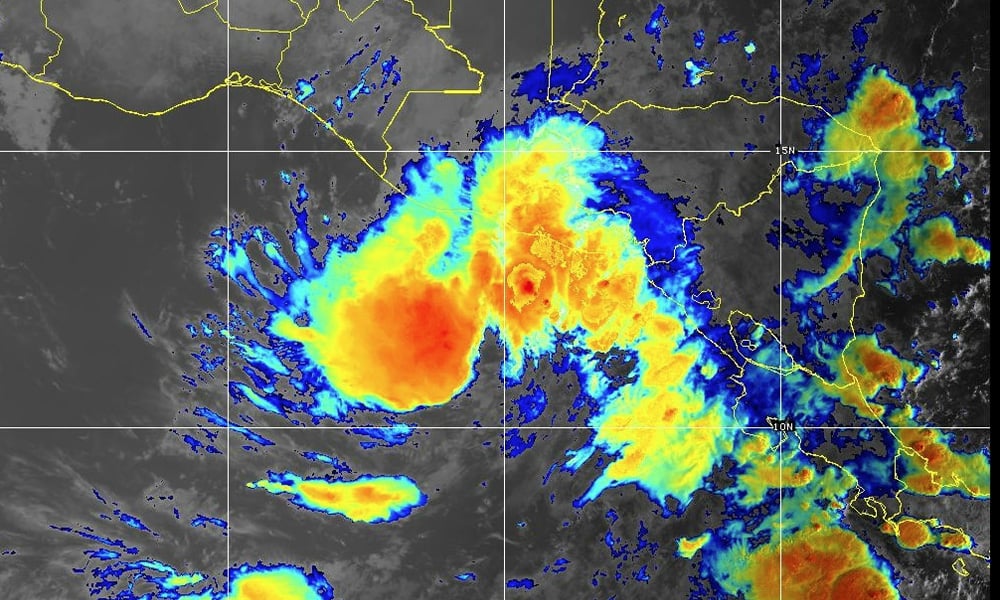Costa Rica, along with its neighboring Central American nations, is on high alert as Tropical Storm Pilar advances from the Pacific. Already responsible for two fatalities and a missing person in El Salvador, the storm is predicted to strike our shores and those of Guatemala, Honduras, Nicaragua, and El Salvador by Tuesday, warns the U.S. National Hurricane Center (NHC).
The tragic incidents in El Salvador involved a young man of 24 and a woman aged 57. They were tragically taken by the strong currents as they attempted to traverse rivers in La Unión, a region situated 200 km from San Salvador. The onset of the torrential downpour began on Sunday, as confirmed by El Salvador’s Environment Minister, Fernando López. Furthermore, an alarming report details the disappearance of an 18-year-old at San Diego beach, La Libertad, just 40 km from the Salvadoran capital.
Currently, Pilar’s ferocity is manifesting with winds at a speed of 85 km/hour, and it’s positioned 315 km from San Salvador, advancing at 7 km/hour. The NHC anticipates the storm gaining more strength by Tuesday, nearing hurricane-level intensity. However, relief may be on the horizon as Pilar is expected to weaken by Wednesday and continue to dissipate into Thursday.
As Costa Ricans, we must remain vigilant. The NHC has cautioned that Pilar’s heavy rainfall could trigger flash floods, urban flooding, and dangerous mudslides, especially in elevated terrains stretching from El Salvador down to our homeland. The storm’s impending arrival is a somber reminder of Hurricane Mitch, which devastated Central America 25 years ago, claiming approximately 9,000 lives and causing economic chaos.
In light of the storm’s severity, El Salvador has taken preemptive measures. Following a request from President Nayib Bukele, the nation’s Congress sanctioned a state of emergency late Sunday night. They are gearing up to address potential hazards, including toppled trees, landslides, and maritime dangers, particularly for smaller vessels.
Here in Costa Rica, the National Emergency Commission (CNE) is not taking any chances. Alejandro Picado, the head of CNE, has elevated the alert to the orange phase, the third-highest level, for all regions facing the Pacific. “With the looming storm, we expect significant rainfall. Our lands are already saturated, and the coastal regions, especially the northern Pacific areas, will witness turbulent sea conditions,” Picado commented.
Regional neighbors are also in preparation mode. Nicaragua’s President, Daniel Ortega, has endorsed a “yellow alert state” via the National System for Disaster Prevention, Mitigation and Response (Sinapred). The Nicaraguan Navy has advised marine vessels to seek safe anchorage.
Guatemala’s National Coordinator for Disaster Reduction (Conred) is closely tracking Pilar, forecasting widespread rain. They have provided guidance to their citizens about potential river surges, inundations, and landslides, emphasizing the importance of self-evacuation if required.
In Honduras, President Xiomara Castro has requested all public service entities to stand ready for emergencies and to maintain constant surveillance of Pilar’s movements. The state’s Permanent Contingency Commission (Copeco) has initiated a “green alert” in the southern departments.
Central America, with its expansive land area of 523,000 km2 and a population of 50 million, remains highly susceptible to meteorological disturbances. As Pilar approaches, the collective hope is for minimal damage and safety for all its residents.

Photo: NOAA






